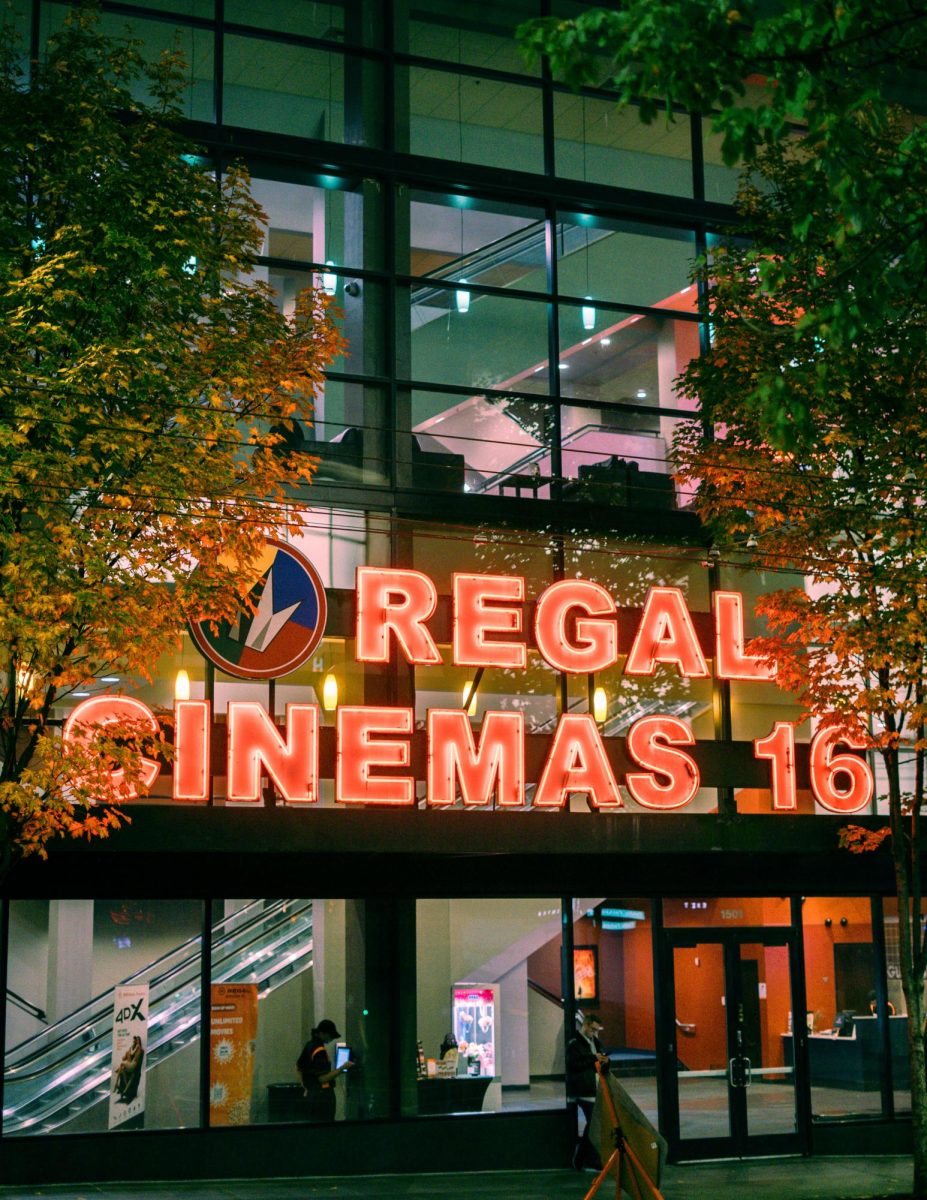
In recent years, it seems as though Hollywood has predominantly pushed out remakes or sequels from existing franchises. So far this year, audiences have seen “Scream 6,” “Guardians of the Galaxy Vol. 3,” “Indiana Jones and the Dial of Destiny” and a live-action “The Little Mermaid.” When movie remakes get pushed out, it is often an attempt to revive viewer interest in films that were once raved about upon their release. More often than not, consumers populate theaters due to the familiarity of the franchises and storylines. Yet, with the recycling of old material and beloved franchises, the question of how young filmmakers and screenwriters are impacted in their own creative processes is posed.
Hollywood has been the center of the American film industry since the 1920s and has gone through several different film eras over the past century. These eras are often defined by their impact on the film industry, new developments in technology and innovative film producers stepping onto the scene.
Even though Hollywood is notorious for adapting already well-known stories, audiences have seen periods where innovative filmmakers completely altered the atmosphere of Hollywood. During the “New Wave,” audiences saw a new generation of filmmakers such as “The Godfather” director Francis Ford Coppola, “Taxi Driver” director Martin Scorsese and “Jaws” director Steven Spielberg.
These films introduced new methods of storytelling as the creators tested the bounds of traditional cinematography and tackled taboo subject matter. The innovative qualities of these films made them instant classics.
In this time, audiences also saw the rise in “blockbuster” films. Movie studios realized the type of profit they could be making when audiences were flocking to the release of films such as “Star Wars” and “Jaws.”
“Jaws” was especially unique in its debut as it popularized the idea of horror movies being summer spectacles. It was a film that broke box office records and would help usher in a new era of big-budget films.
The 90s were also an exciting time for cinema as more voices and stories were entering Hollywood’s atmosphere. There was an emergence of LGBTQ+ cinema with films such as “The Birdcage” and “Boys Don’t Cry” that would go on to be mainstream, award-winning films. Black cinema had also emerged, with Spike Lee at the forefront when his 1986 film “She’s Gotta Have It” had its breakthrough. Then John Singleton broke through with his autobiographical drama “Boyz N the Hood,” which made him the first African American and the youngest-ever Best Director Oscar nominee. The increasing diversity and representation in 90s mainstream media and cinematic production expanded the bounds of film as well as who could now participate.
Hollywood has seen periods of cinema that were characterized by risk-taking and broadening the spectrum of existing genres by expanding who gets to participate in cinema production.
So why did Hollywood shift from pushing out original cinema to flooding the theaters with remakes?
When there is existing popularity and name recognition around an intellectual property (IP), this is inevitably going to draw audiences back in and produce the type of profit film studios are seeking. Audiences could ultimately be unhappy with the remake, but they will still boost box office numbers by going out of their way to see a new movie that is a part of a familiar franchise.
Alex Johnston, professor of film production, expressed that he doesn’t only believe there is less opportunity for young filmmakers to be exposed to different ideas in Hollywood films, but that young creators are being compelled to produce within the cinematic universes they are being exposed to.
“If you want to go on a larger budget, filmmakers are forced to skew their vision. Then there’s little room for new IP and new things to emerge,” Johnston said. “In industries where there are workers and there are bosses, there’s been an incredible extraction of value away from workers into executives.”
Major film studios are not always interested in originality because, more often than not, they make less money at the box office than franchise movies. In the eyes of executives, there is more risk to producing original movies and Hollywood is a business that is interested in maximizing its profit.
Em Wheeler, a third-year photography and environmental studies double major, has been actively engaged with film as a hobby throughout their youth up until the present day. They expressed that in the past they have adopted themes of connection and nature into the films that they have created. Upon reflection, they found that their film had parallels to “Into the Wild,” a movie about a man setting out on a journey through the Alaskan wilderness.
“I don’t think I or other filmmakers realize that what we consume has an influence on us. When I think of the movies that have stuck with me, I can see now how they have influenced projects I’ve worked on,” Wheeler said.
In the midst of the entertainment industry, streaming platforms provide young filmmakers and screenwriters another way to score success.
Kirsten Thompson, the department chair of film and media, finds that streaming platforms provide more outlets for filmmakers and screenwriters to distribute their work. Netflix, Hulu and Amazon Prime have become major participants in film production as they have created award-winning films.
“We’re in a very rich time period in lots of ways with streaming platforms. They’ve funded enormous amounts of new content and are rolling the dice on new series and dramas that would never be funded in Hollywood,” Thompson said.
Additionally, instantaneous fame can be found on several platforms in today’s day and age with the widespread usage of TikTok, Instagram and YouTube. Social media provides younger creators alternative ways to share their content and projects with the world, but is this a viable way for people to find success when the feasibility of social media is often in question?
Emre Selcuck, a second-year computer science major, thinks that social media platforms are not able to provide creators an authentic opportunity to flourish or acquire the audience most of them are seeking. Selcuck said that he and most other young people are on these platforms searching for brief, attention-grabbing content and that the use of our phones has come down to us swiping.
“You can get famous over nothing and get lucky with the algorithm, but the creators who find their fame through platforms like TikTok I find to be very superficial. It’s important for branding and getting yourself out there, but if you’re trying to search for a group of people that will be invested in what you’re producing, it’s not going to happen,” Selcuck said.
Even though the entertainment industry has expanded enormously with the developments of television, accessibility to streaming platforms, and an increase in audience consumption, social media is an outlier when it comes to the film industry.
Michael Sherman, the treasurer of the Filmmakers Club, talked about how he is not entirely discouraged by the industry of Hollywood.
“Funnily enough, I’m surprisingly not as pessimistic about the state of the industry as one might expect. A positive long-term effect of the massive film franchises of the last 20 years, like “Harry Potter” and “Twilight,” is that audiences are starting to bear the fruits of a small crop of incredibly famous actors willing to work on tiny independent films for little to no salary,” Sherman said.
Sherman went on to highlight that actors like Robert Pattinson have starred in smaller independent films like “Cosmopolis,” “Good Time” and “The Lighthouse,” while Kristen Stewart has starred in several niche films over the past decade. Their name recognition allows them to bring in a bigger audience and publicity to what could have been an overlooked film.
Sherman also talked about how Marvel has hired indie directors to pick up their films such as Ryan Coogler, Chloe Zhao and Taika Waititi. Even though they have received critical acclaim before and after their collaborative efforts with Marvel, working with a big-name studio still establishes credibility for these directors’ careers meaning that they can go and get funding for the projects they are really passionate about.
Given the shifts that Hollywood has endured in the past, the future of big film studios is unpredictable. Hollywood could continue to push out movie remakes and reboot franchises, but with the entertainment industry becoming more accessible young creators have more opportunities to distribute their work.
People can also weigh their success on different scales. Some may want to go big and make it in Hollywood while others may be content as a small, independent filmmaker. Regardless, at the end of the day, young creators are going to produce what they want.
















